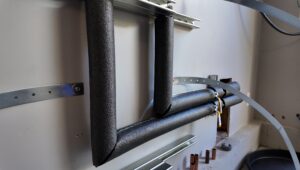 The quality of the air we breathe indoors is often taken for granted, yet it plays a crucial role in our health and well-being. Indoor air quality can be affected by a variety of factors, including but not limited to pollutants, allergens, and humidity levels. Interestingly, these factors can change with the seasons, making indoor air quality a dynamic challenge that requires year-round attention.
The quality of the air we breathe indoors is often taken for granted, yet it plays a crucial role in our health and well-being. Indoor air quality can be affected by a variety of factors, including but not limited to pollutants, allergens, and humidity levels. Interestingly, these factors can change with the seasons, making indoor air quality a dynamic challenge that requires year-round attention.
As the seasons change, so do the specific threats to our indoor environment. From the pollen-laden air of spring to the dry, heated atmospheres of winter, each season brings its unique set of challenges. Understanding these seasonal differences is the first step toward ensuring that the air inside our homes remains healthy and clean throughout the year.
Spring: Awakening to Fresh Air
Spring symbolizes renewal and growth, but it also brings its own set of challenges for maintaining indoor air quality. As nature comes to life outside, a variety of allergens and pollutants threaten to compromise the air within our homes. Here’s how to counteract these challenges and ensure your indoor environment remains a haven of health and freshness.
Common Air Quality Issues in Spring
- Pollen: A primary concern during spring is the high level of pollen from flowering plants, trees, and grasses. Pollen can easily enter homes through open windows, doors, and on clothing, affecting those with allergies.
- Dust and Dander: Spring cleaning can stir up dust, pet dander, and other particulates that have settled over the colder months.
- Mold Growth: The increase in humidity and warmth can encourage mold growth, especially in poorly ventilated areas.
Tips for Improving Indoor Air Quality
Deep Cleaning and Decluttering
- Tackle Dust and Dander: Begin with a thorough deep cleaning of your home, focusing on areas that accumulate the most dust, such as under furniture, behind appliances, and on textile surfaces like carpets and curtains.
- Minimize Clutter: Reducing clutter not only makes cleaning easier but also eliminates spaces where dust and allergens can gather.
Managing Pollen Intrusion
- Keep Windows Closed: While it’s tempting to open windows to let in fresh air, doing so can invite pollen indoors. Rely on air conditioning with a clean filter to circulate air.
- Create a Pollen-Free Zone: Designate your bedroom as a pollen-free zone. Shower before bed to remove pollen from hair and skin, and consider using an air purifier with a HEPA filter.
Ventilation and Air Purification
- Use Air Purifiers: Air purifiers with HEPA filters can capture a significant amount of pollen and other allergens, improving indoor air quality.
- Ventilate Strategically: Ventilate your home by opening windows when pollen counts are lowest, typically on rainy or cloudy days, and in the evening.
Season-specific Maintenance Checklist
- HVAC System Check: Ensure your HVAC system’s filters are replaced or cleaned to improve efficiency and air quality.
- Check for Mold: Inspect areas prone to dampness for signs of mold. Clean and address any issues promptly to prevent growth.
- Dehumidify: Use dehumidifiers in particularly humid areas of your home to prevent mold and mildew development.
By implementing these strategies, you can significantly improve the air quality in your home during the spring season, creating a healthier and more comfortable living environment.






